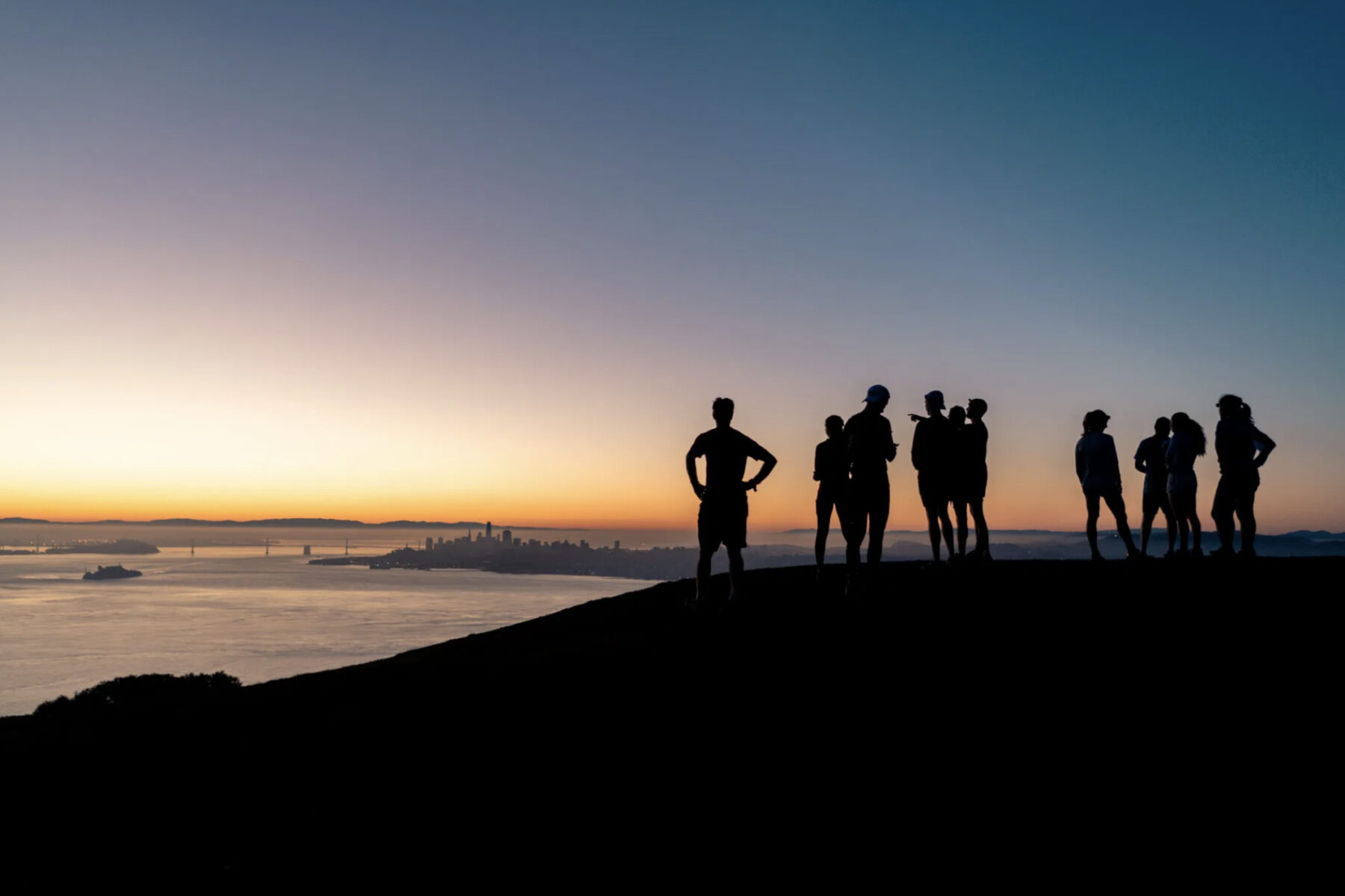
In our Trail Running 101 series, we’re covering just about everything you might want to know to get started in the sport, as well as tips and tricks for experienced runners to make it more enjoyable. This is the eighth part of the series; stay tuned for more.
Intro
Trail running has its own circadian rhythm, one not always governed by the sun. It’s a sport that shrugs off nightfall, not letting the absence of light deter forward progress. Whether in a competitive setting, like most 100-milers and races with evening starts, or for the purposes of creating time to train around a crowded schedule, most trail runners will eventually encounter darkness.
This experience can be defamiliarizing. One of the appeals of running in the backcountry is the scale it provides, a visual boundlessness that can register as sublime. In the absence of sunlight, however, our field of vision shrinks to the distance cast by our headlamps’ pale beams and the diffuse glow from the moon when skies are clear. Running through the night can be claustrophobic, sure, but it can also be liberating. There’s a certain power to it; while the rest of the world sleeps, we persist. Darkness is just another thing to be endured.

Lumens / Power
First, a non-technical definition. A lumen is the degree of measurement used to describe the total amount of visible light emitted from a light source, like a lamp, candle, strobe, etc. For our sake, think of the number of lumens a headlamp has as indicative of its (maximum) power / intensity. Most lighting options for trail running live in a range between 50 lm and 900 lm, with the bulk falling between 200 lm and 600 lm. More powerful options, i.e., those that skew closer to the 900 lm upper limit, are going to be significantly heavier and more expensive than lower lumen models, which though dimmer, tend to be more affordable and often feel more comfortable because of their smaller size.
Selecting a headlamp based on its number of lumens is multifactorial, often coming down to how adapted you are to running in low-light conditions, how technical of a terrain you’re running on, how fatigued you are, and what you’re comfortable with weight-wise. The more technical the terrain and/or the more light you need to feel confident at night, the more sense it makes to go with a more powerful headlamp; less powerful options won’t turn night into day, visually, but are more compact, less expensive, and simpler. For runners with little to no experience running in the dark, starting out with a headlamp rated around at least 300 lm is a good place to start.
Lighting Modes & Settings
While lumen ratings are an important factor to consider when choosing a headlamp, they don’t reveal everything about how the headlamp actually performs on trail. The advancements made in lighting technology have definitely helped amplify lumen output across the board, but the ability to adjust that power through different settings is where progress has truly been made. Today, many models come with as many as 5 different lighting modes with different beam types that can be cycled through with a click of a button, and a handful of premium headlamps, like the Petzl Swift RL, feature “adaptive lighting,” allowing them to automatically adjust brightness and beam pattern based on your surroundings (e.g., the headlamp dims when aimed at an object close to you and brightens when directed off into the distance). The move from halogen bulbs to LED lights deserves a lot of credit for making these options possible. LEDs are, on the whole, more energy efficient and brighter, allowing headlamps to burn at higher intensities for longer periods of time. The ability to toggle into a dimmer setting can also be used as a way to extend a headlamp’s battery life over the course of an extended outing.

Battery Life & Rechargeability
Your intended use(s) should guide decision making when considering a headlamp’s battery life. How long do you plan on being out in the dark? Ultralight, ultra-compact models usually have standard burn times of between 2-4 hours, which makes them insufficient in the context of overnight efforts but ideal for most early morning / evening runs and shorter efforts. More powerful headlamps — those in excess of 600 lm — can have standard burn times anywhere from 6-12 hours, which should be enough to get most runners through a night spent out on the trails. However, these options tend to be overkill for most runs that require a headlamp and can be a pain to carry when not in use (the more powerful, extended-battery-life models often feature a separate, fairly large battery pack).
Roughly coincidental with the shift that many headlamps made from halogen bulbs to LED lights was the replacement of single-use batteries (e.g., AA or AAA) with rechargeable ones. Most models today are powered by lithium-ion batteries which, like most electronics, charge via micro USB cables. In a practical sense, rechargeable batteries dispense the need to buy standard batteries, which can be convenient (not to mention cost-efficient and better for the environment) when on the go. They are also generally much lighter, and, in most cases, are more powerful than non-rechargeable batteries. Some modern headlamps, like the Petzl Iko Core, can accommodate both, which can be helpful if you don’t have time to recharge batteries or you chronically lose USB cables.

Fit & Weight
As mentioned in the intro, headlamp design as it relates to fit and form doesn’t vary all that much. Most models use an adjustable elastic strap or system of straps to fix their front-mounted lamps to users’ foreheads. Heavier examples, like the Biolite HeadLamp 800 Pro, tend to have headbands with two-part constructions for added stability, and position the lamp’s battery along the back of the head, whereas some ultralight models, like the Petzl Bindi, can get away with using just a thin elastic cord with a cinch stopper. Weight will likely be the main factor affecting a headlamp’s fit, which can start at around 20ish grams and reach upwards of 150 g for some of the more powerful models.
Even though most headlamps come in a one-size-fits-all format and accommodate just about every head shape, finding a model that you can secure comfortably to prevent jostling during activity is important, so when in doubt, go with lighter-weight options (provided they still fit your power and battery life preferences). It’s also worth checking to see what types of helmets the headlamp you’re interested in is compatible with if you plan on using it for other activities aside from running, like skiing, climbing, and biking.
Conclusion
To again tug on the analogy made between headlamps and trail shoes, many runners will benefit from owning several different types of models, each with their own intended uses. Smaller options tend to work best for early morning / late evening weekday runs, whereas more powerful options are great for adventure runs and ultras. Even if you have no plans to stay out past sunset, including a headlamp as part of your standard kit can go a long way in mitigating your chances of feeling your way back to the trailhead in the dark.

Just read over your camping article around headlamps.
You should check out lupine lights. I’ve been using them for 10+ years (and my original light still works). They are a lil more high end but their penta fits in with the article you did.